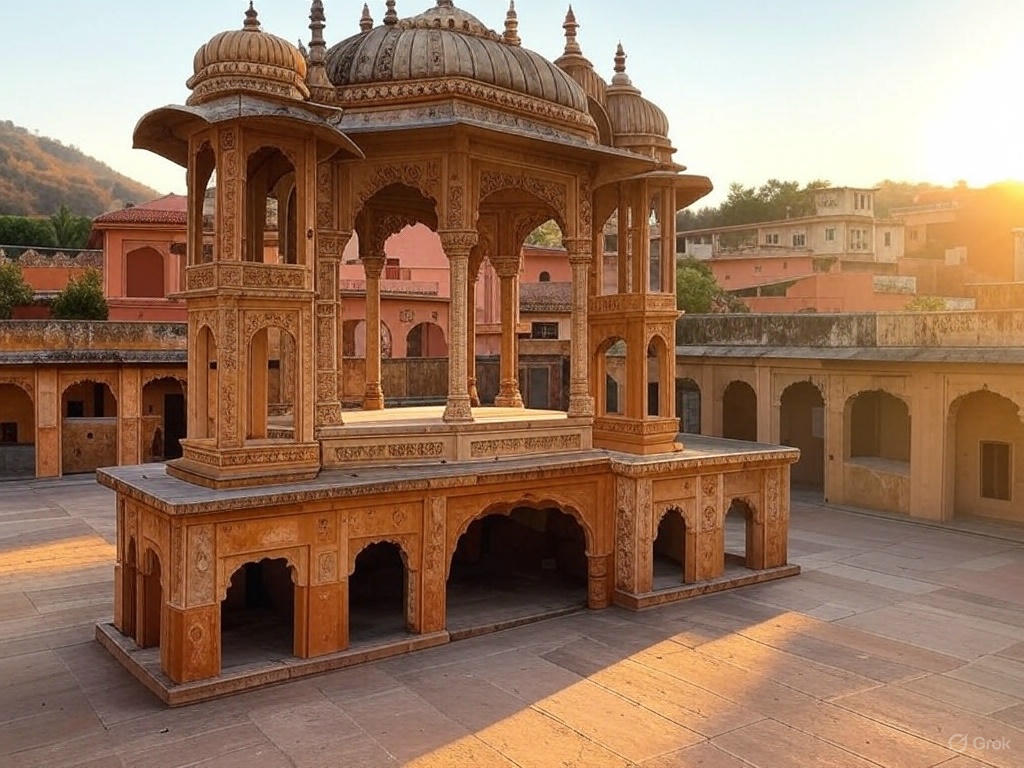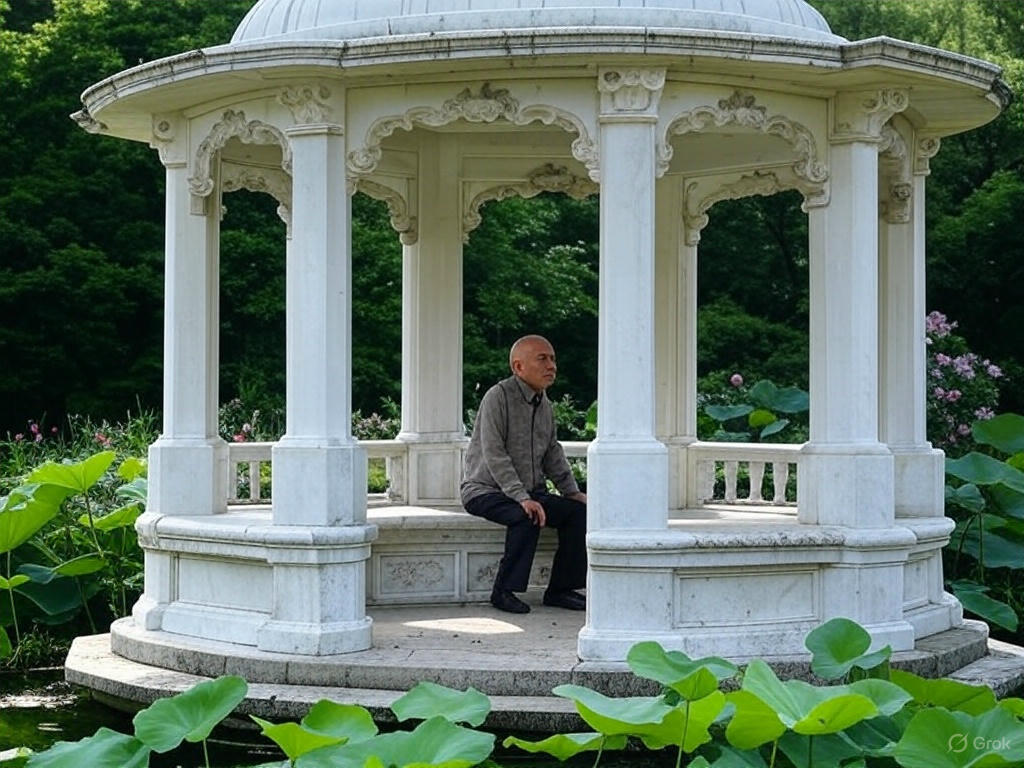Gaitore Ki Chhatriyan Jaipur
Amid the bustling streets, majestic forts, and vibrant markets of Jaipur lies a serene and often overlooked heritage gem—Gaitore Ki Chhatriyan. Located just a few kilometers from the city center on the Jaipur-Amber Road, this historical site offers a tranquil escape and a visual feast of Rajasthani architecture. These elegant cenotaphs, or chhatris, are a tribute to Jaipur’s royal past and the valorous rulers of the Kachwaha dynasty.

What is Gaitore Ki Chhatriyan?
“Gaitore” is believed to be a colloquial form of the Hindi phrase “Gaye ka Thor,” which translates to “the resting place of the departed.” It is the official cremation ground of the Kachwaha Rajput rulers of Jaipur, and each cenotaph marks the cremation site of a king, adorned with beautiful carvings, domes, and pillars.
Built in white marble and yellow sandstone, the chhatris (cenotaphs) represent a blend of Rajput and Mughal architecture. The site captures the nobility of Jaipur’s rulers through its fine craftsmanship, tranquil setting, and symbolic design.
A Glimpse into History
The tradition of building chhatris over the cremation sites of Rajput royalty dates back centuries. The Gaitore complex was established after Sawai Jai Singh II, the founder of Jaipur, moved the royal capital from Amber to Jaipur in the 18th century.
While many earlier rulers were cremated in Amber, Gaitore became the formal royal cremation ground from Jai Singh II’s reign onward. Since then, most of Jaipur’s kings have been honored here with a dedicated cenotaph, each telling its own story through carvings, design, and grandeur.
Architectural Marvel
Each cenotaph at Gaitore Ki Chhatriyan is unique, reflecting the personality, reign, and achievements of the ruler it honors. The white marble structures are intricately carved with motifs of battles, processions, floral patterns, and scenes from royal life.
The architecture is a striking example of Rajputana design, featuring:
- Open domed pavilions on raised platforms
- Carved pillars and latticed screens (jalis)
- Lotus domes and floral engravings
- Mughal-style arches and embellishments
The blend of Hindu and Islamic architecture gives the site a timeless aesthetic that appeals to both history lovers and architecture enthusiasts.
Notable Cenotaphs
Among the many chhatris, a few stand out for their design and significance:
- Maharaja Sawai Jai Singh II’s Chhatri: The founder of Jaipur, his cenotaph is considered the most impressive, with detailed carvings and beautifully proportioned domes.
- Maharaja Sawai Madho Singh’s Chhatri: Known for its artistic details and intricate lattice work.
- Maharaja Sawai Ram Singh’s Chhatri: Distinguished by its ornate floral designs and symmetrical layout.
Each cenotaph is positioned carefully in relation to others, symbolizing harmony and continuity in royal legacy.
The Peaceful Ambience
One of the most enchanting aspects of Gaitore is its peaceful, almost meditative atmosphere. Unlike the crowded palaces and forts of Jaipur, Gaitore remains relatively quiet and uncrowded, offering a chance to truly connect with the past.
Surrounded by the Aravalli Hills and overlooking a dry stream bed, the site provides a sense of timelessness. Peacocks often roam the area, and the breeze carries the scent of earth and sandstone. It’s a photographer’s paradise, especially during golden hour when the domes glow under the setting sun.
Visiting Tips
- Location: Gaitore Ki Chhatriyan, Jaipur-Amber Road, about 15–20 minutes from the city center.
- Timings: Open daily from 9:00 AM to 5:00 PM.
- Entry Fee: Nominal (₹30–50 for Indian nationals; slightly higher for foreign tourists).
- Best Time to Visit: Early morning or late afternoon for pleasant weather and lighting.
- Footwear: You may need to remove shoes before entering certain cenotaphs—carry socks for comfort.
Nearby Attractions
Gaitore’s location makes it an ideal part of a heritage circuit. You can easily combine your visit with:
- Amber Fort – Just 15 minutes away
- Jal Mahal (Water Palace) – En route to Amber
- Nahargarh Fort – For panoramic views of Jaipur
- Kanak Vrindavan Garden – A beautiful stop for photography
Why You Should Visit
While Jaipur dazzles with grand palaces and colorful bazaars, Gaitore Ki Chhatriyan offers something different—a quiet moment of reflection amidst architectural beauty and royal legacy. It’s a place where stories are etched in stone and history breathes through silence.
Whether you’re a history enthusiast, a photographer, a cultural explorer, or a traveler seeking serenity, Gaitore offers a soulful glimpse into Rajasthan’s royal heritage.
Final Thoughts
Gaitore Ki Chhatriyan is one of Jaipur’s most underappreciated treasures. It is a place of remembrance, reverence, and refined craftsmanship that deserves a spot on every traveler’s itinerary. Come here to walk among kings—not in grand courts, but in their final resting place, where marble and memory stand as guardians of history.
